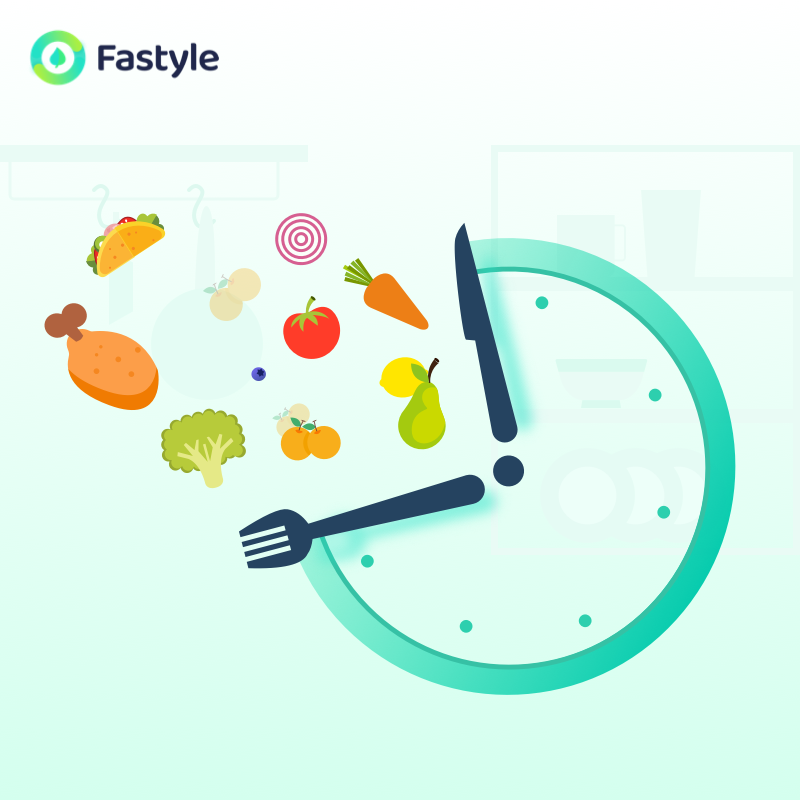The way intermittent fasting works for weight loss is to limit your eating time, which may result in missing a meal or two to naturally lower your calories intake for the day. Therefore, unlike a traditional calorie-restricted diet, it is important to think about the food you need to eat to meet your nutritional requirements during intermittent fasting. In this article, I will introduce the healthy eating recommendations for intermittent fasting, and what foods to eat to get all your nutrients right.
A diet that is rich in nutrient-poor processed food, high in calories, saturated fat, salty, and added sugar is reported as the typical diet Americans consume based on the Advisory Report by the U.S. Department of Agriculture. Such poor diet is not only linked to inflammation, chronic disease, and overweight and obesity but also making weight loss much harder even if you’re on intermittent fasting. A healthy eating habit with high nutrition quality can help you approach intermittent fasting in a healthy way and more effective at weight loss.
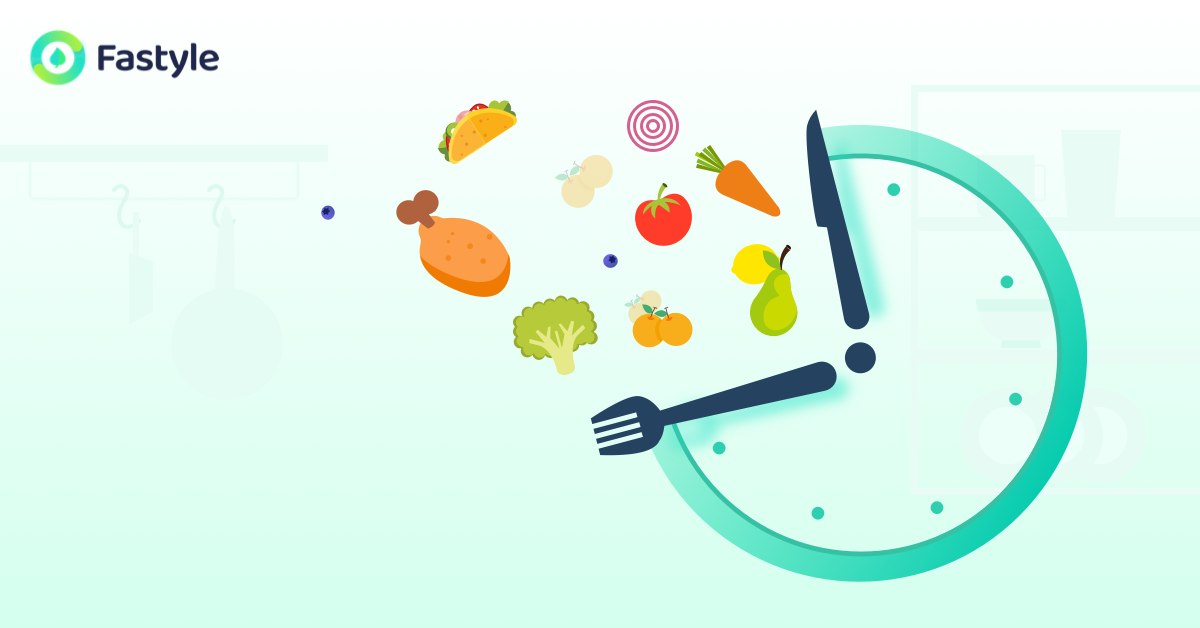
The Dietary Guidelines
Regarding what food should be included in your diet, we recommend you follow your local national dietary guideline which is usually based on scientific research with evidence supporting the benefits of following a healthy dietary pattern. Some current dietary guidelines include:
- The Dietary Guidelines for Americans
- The Eatwell Guide in UK
- Canada’s Food Guide to Healthy Eating
- The Australian Guide to Healthy Eating
- Dietary Guidelines for Adults in Greece
- Finnish Nutrition Recommendations
- My Health Plate, Singapore
- Diet, nutrition and prevention of chronic disease: report of a joint WHO/FAO expert consultation.
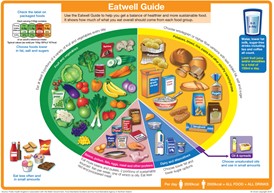
Foods to eat – The Dietary Guidelines for Americans
Let’s use the Dietary Guidelines for Americans here, which provides guidelines to healthy eating:
- Follow a healthy dietary pattern at every life stage.
- Customize and enjoy nutrient-dense food and beverage choices to reflect personal preferences, cultural traditions, and budgetary considerations. – basically, eat what does suit you!
- Focus on meeting food group needs with nutrient-dense foods and beverages and stay within calories limits. The core elements that make up a healthy dietary pattern include fruits, vegetables of all types, grains, dairy and alternatives, protein food and oils.
- Limit foods and beverages higher in added sugar, saturated fats, and sodium, and limit alcoholic beverages.
Fruits and vegetables of all types
For vegetables you may have all kinds including dark green; red and orange; beans, peas, and lentils; stary; and other vegetables. Prepare a list of vegetables best friendly with intermittent fasting at home and conform to it.
For fruits aim for various types based on their color, especially whole fruits instead of juice.
Fruit and vegetables are a generally good source of Vitamin C, A, E, K, and folic acid (B group vitamin), minerals such as magnesium, potassium, phosphorous, zinc, phytochemical, and dietary fiber.
Each color usually represents a group of vitamins and minerals, choose a range of fruits and vegetables to vary the vitamins and minerals you’re getting from them. Having fresh whole fruits and vegetables are always better than juices with the extra benefits of dietary fiber, which can help keep you fuller for longer.
Grains
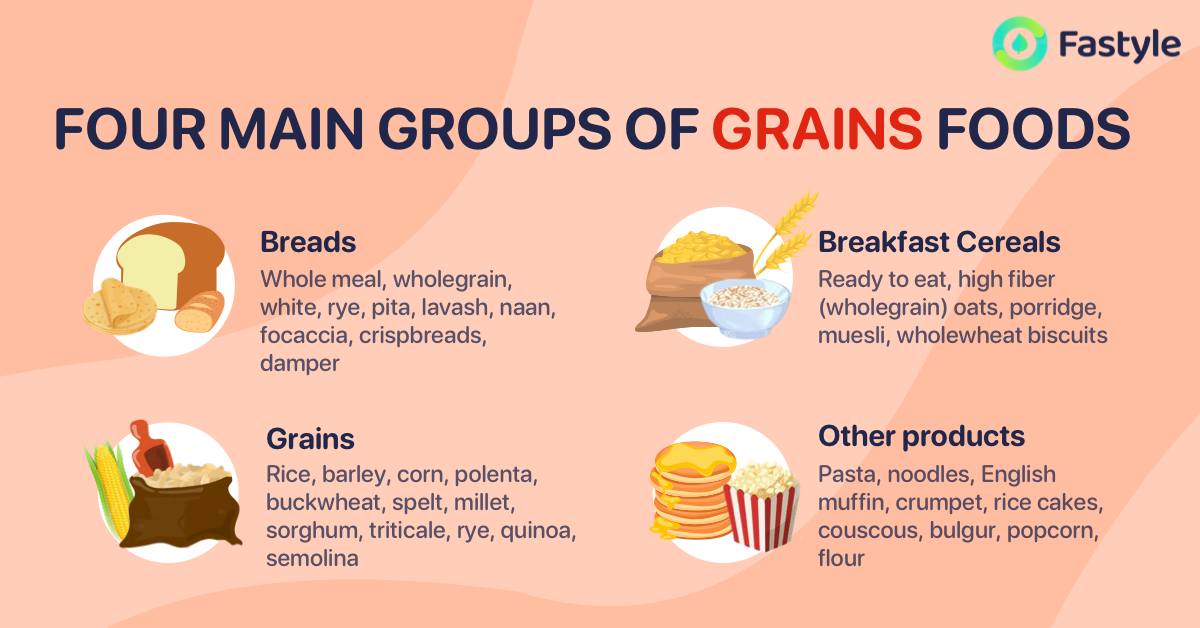
The guideline recommends at least half of the grains you’re having are whole grains. Food that is considered as grains is mostly made from wheat, oats, rice, rye, barley, millet, quinoa, and corn.
Grains provide carbohydrates/starch, protein, a wide range of vitamins and minerals including B vitamins folate, thiamin, riboflavin, niacin, iron, vitamin E, zinc, magnesium, and phosphorus, and dietary fiber in wholegrain.
Grains foods can be broken up into four main groups. The main sub-groups are:
- Breads – Whole meal, wholegrain, white, rye, pita, lavash, naan, focaccia, crispbreads, damper
- Breakfast Cereals – Ready to eat, high fiber (wholegrain) oats, porridge, muesli, wholewheat biscuits
- Grains – Rice, barley, corn, polenta, buckwheat, spelt, millet, sorghum, triticale, rye, quinoa, semolina
- Other products – Pasta, noodles, English muffin, crumpet, rice cakes, couscous, bulgur, popcorn, flour.
Dairy and alternatives
This group includes fat-free or low-fat milk, yogurt, and cheese, and/or lactose-free versions and fortified soy/other plant-based beverages and yogurt as alternatives.
Dairy is an abundant source of calcium in a readily absorbable and convenient form. A good source of protein, vitamin A, D, B vitamins (riboflavin and B12), and zinc. Some people with intolerance or personal preferences may also choose lactose-free dairy or fortified versions of plant-based milk alternatives.
Protein foods
Protein foods include lean meats, poultry, and eggs; seafood; beans, peas, and lentils; and nuts, seeds, and soy products.
Animal foods in this group provide a wide variety of nutrients such as protein, iodine, iron, zinc, vitamins, especially B12, and essential fatty acids. Lean red meats are a particularly good source of iron, zinc, and B12 which are more easily absorbed than plant foods.
Plant-based foods provide very similar nutrients as animal foods, but the absorption rate is lower. Adding vitamin C found in fruits and vegetables can help the absorption of iron from plant foods source.
Protein foods fall into six categories, examples include:
- Lean meats – Beef, lamb, veal, pork, kangaroo, lean (lower salt) sausages
- Poultry – Chicken, turkey, duck, emu, goose, bush birds
- Fish and seafood – Fish, prawns, crab, lobster, mussels, oysters, scallops, clams
- Eggs – Chicken eggs, duck eggs
- Nuts and seeds – Almonds, pine nuts, walnut, macadamia, hazelnut, cashew, peanut, nut spreads, pumpkin seeds, sesame seeds, sunflower seeds, Brazil nuts
- Legumes/beans – All beans, lentils, chickpeas, split peas, tofu.
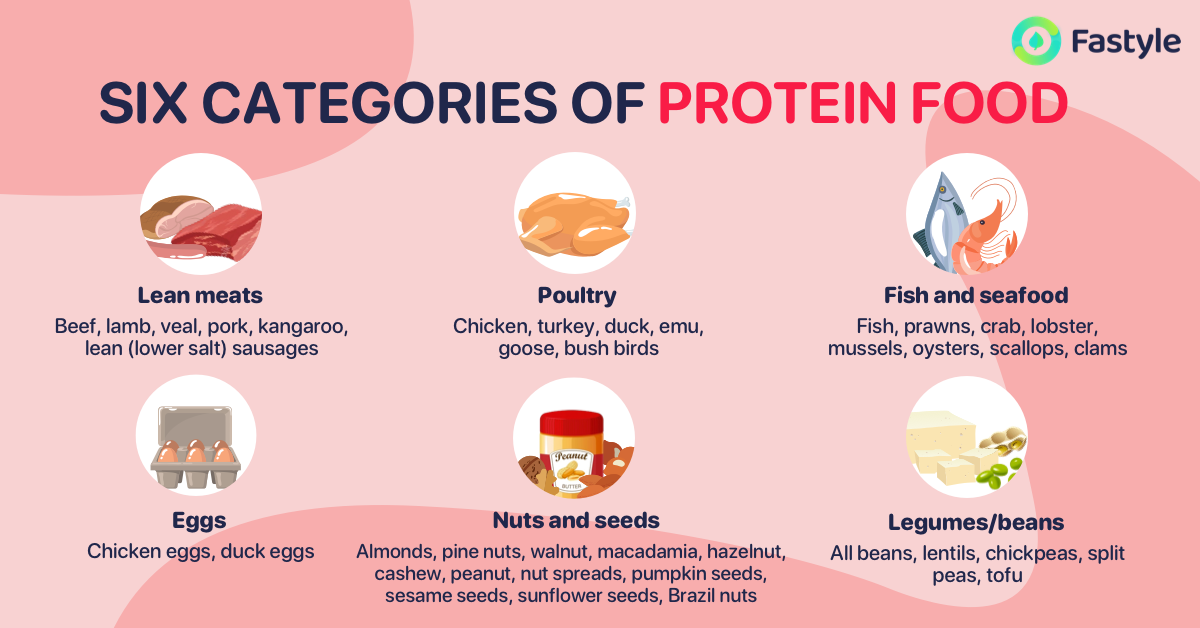
Oils
Oils, including vegetable oils and oils in food, such as seafood and nuts.
Dietary fats are part of a balanced diet, help absorb fat-soluble vitamins and are important for health. Oils mostly contain unsaturated fats which help reduce the risk of heart disease and lower cholesterol levels when used to replace saturated fat. There are two main types of unsaturated fats:
- Monounsaturated fats: found in olive, canola oil, avocado, some nuts (e.g., cashews, almonds)
- Polyunsaturated fats:
- Omega-3 fats found mostly in oily fish and some seeds (e.g. flaxseed, chia seeds)
- Omega-6 fats found in safflower, sunflower, soybean oil, some nuts (e.g. Brazil nuts)
Added sugar, saturated fat, sodium, and alcoholic beverages
These foods are usually “energy-dense” and “nutrient-poor” and should be eaten in moderation. In other countries, it is considered as “discretionary food” or “occasional food”. Higher levels of energy/calories, saturated fat, added sugar, and salt/sodium are linked to increased risk of obesity, chronic diseases such as type 2 diabetes, high blood pressure, heart disease, stroke, and some forms of cancer.
Foods that are high in added sugar, saturated fats, and sodium/salt include cookies, cakes, desserts, and pastries; processed and deli meat; sweetened condensed milk, ice cream, and other ice confections; confectionery and chocolate; savory pastries and pies; commercial fast foods, fried foods, chips…
Alcoholic beverages are also calories dense drinks with no nutritional value. Alcohol also prevents the breakdown and absorption of nutrients from food and may increase the risk of micronutrient deficiency in the long term. Alcohol consumption is also linked to several health risks including malnutrition, heart disease, liver damage, pancreatitis, impaired brain function, and some cancers.
Summary
- Follow healthy eating to enhance the benefits and lose weight effectively while on intermittent fasting.
- Follow the Dietary Guidelines for Americans to build healthy dietary pattern or your local national dietary guideline.
- Includes fruits, vegetables of all types, grains, dairy and alternatives, protein food and oils to have a nutrient-dense, high-quality diet.
- Vary your food choices (by color and types) to get more nutrients from food.
- Limit foods and beverages higher in added sugar, saturated fats, and sodium, and limit alcoholic beverages.
FOLLOW US
